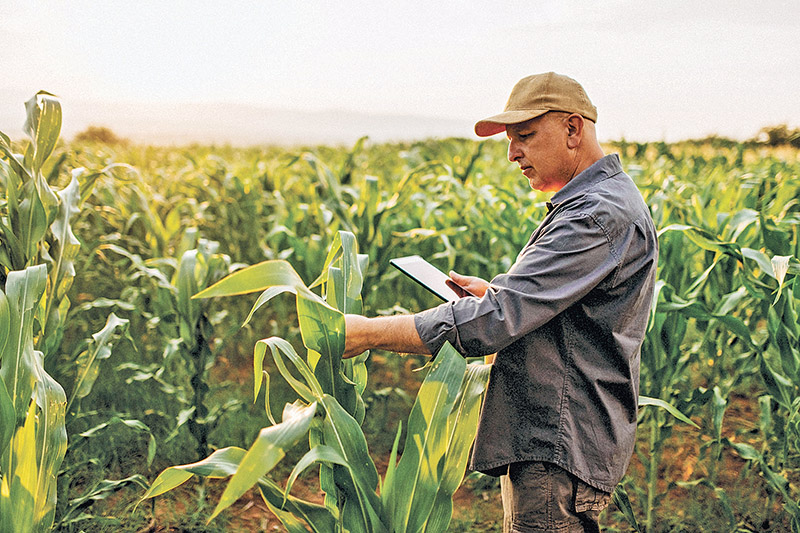By Ashley Knapton – B Sc (Agr), CCA-ON
AgriNews Contributor
Hard to believe but the summer has truly flown by. While there are lots of things to consider reflecting on in terms of our forage harvest and storage performance, we should start to look ahead to an important time for many livestock producers – corn silage harvest.
While genetics and the growing season are certainly influential when it comes to the quality and quantity of a corn silage crop, we also have a big part to play as we need to ensure we convert success in the field to success in the barns.
The first step will be to ensure proper harvest timing. Harvest timing is generally driven by moisture content as moisture is an important influencer of our ability to store a crop as well as to ensure an efficient fermentation. The bacteria involved in fermentation needs moisture to function, however, too wet of a silage will alter the fermentation and allow the growth of by-products that we don’t want to see in our silage such as butyric acid. With too high of a moisture content we will also see an increase in shrink loss and a higher risk of poorer quality, including palatability. On the other hand, should the silage get too dry, packing the silage gets harder. This means ensuring an efficient fermentation is more difficult since we are unable to eliminate as much oxygen.
Ideal moisture will depend on your storage type – bunks for example might have more flexibility than a silo which can run when the silage gets too wet. Freezing can be a challenge in all storage types when the moisture gets too high. Ideally, a range of 65 percent +/- 2 percent moisture will fit many systems, but the classic answer here of course is, it depends. Bags can handle drier feeds than tower silos for example, in some cases as low as 60 percent. Bunker silos can handle wetter feeds, up to almost 70 percent. Other factors to consider are your chop length and packing capacity. If you need to have your chop length on the longer side for your ration, packing inherently will be harder so it will be extra important to ensure the feed does not get too dry to pack.
The dry down of a plant is really driven by the depositing of starch through the cob, meaning even if frost or disease results in the appearance of dry plants, the only way to know the moisture for sure is to test a whole plant sample. This also means that we can take a look at the milkline on a cob in conjunction with the whole plant moisture to gauge the stage of the crop and how much opportunity there is to advance the milkline.
What kind of decisions can be made around harvest moisture and milkline? The largest pertains to the starch content of the corn silage. Since the deposition of starch is the driving force behind the dropping of moisture, we can infer that if we have the harvest window and the storage management ability, that leaving the corn silage to dry in the field will increase the starch content. A good rule of thumb is to keep in mind that for a point decrease in moisture, we see a one point increase in starch content. By continuing to improve our storage management, we afford ourselves the opportunity to increase our starch content.
To determine the whole plant moisture, start by cutting a representative sample of 5 plants at the height you intend to harvest at. Chop the plants and then dry using a Koster tester or the microwave method. Be sure to include the cob in this sample as it is both a large portion of the final yield as well as the carrier of a great deal of moisture. Often local seed and feed dealerships will run events in the weeks leading up to harvest where you will be able to get your fields tested. Be sure to reach out to your reps to see what they can help you with.
By using our knowledge of plant dry down, starch accumulation and hopefully a little bit of luck from Mother Nature, we can set our fermentation up for success by taking our corn silage off at the ideal moisture. Happy and safe harvest!













